- Home
- Graham Hancock
Fingerprints of the Gods Page 27
Fingerprints of the Gods Read online
Page 27
they were separated by the interval of a great and terrible deluge:
I will proclaim to the world the deeds of Gilgamesh. This was the man to whom all
things were known; this was the king who knew the countries of the world. He was
wise, he saw mysteries and knew secret things, he brought us a tale of the days
before the flood. He went on a long journey, was weary, worn-out with labour,
returning he rested, he engraved on a stone the whole story.1
The story that Gilgamesh brought back had been told to him by a certain
Utnapishtim, a king who had ruled thousands of years earlier, who had
survived the great flood, and who had been rewarded with the gift of
immortality because he had preserved the seeds of humanity and of all
living things.
It was long, long ago, said Utnapishtim, when the gods dwelt on earth:
Anu, lord of the firmament, Enlil, the enforcer of divine decisions, Ishtar,
1 The Epic of Gilgamesh, Penguin Classics, London, 1988, p. 61.
184
Graham Hancock – FINGERPRINTS OF THE GODS
goddess of war and sexual love and Ea, lord of the waters, man’s natural
friend and protector.
In those days the world teemed, the people multiplied, the world bellowed like a
wild bull, and the great god was aroused by the clamour. Enlil heard the clamour
and he said to the gods in council, ‘The uproar of mankind is intolerable and sleep
is no longer possible by reason of the babel.’ So the gods agreed to exterminate
mankind.’2
Ea, however, took pity on Utnapishtim. Speaking through the reed wall of
the king’s house he told him of the imminent catastrophe and instructed
him to build a boat in which he and his family could survive:
Tear down your house and build a boat, abandon possessions and look for life,
despise wordly goods and save your soul ... Tear down your house, I say, and
build a boat with her dimensions in proportion—her width and length in harmony.
Put aboard the seed of all living things, into the boat.3
In the nick of time Utnapishtim built the boat as ordered. ‘I loaded into
her all that I had,’ he said, ‘loaded her with the seed of all living things’:
I put on board all my kith and kin, put on board cattle, wild beasts from open
country, all kinds of craftsmen ... The time was fulfilled. When the first light of
dawn appeared a black cloud came up from the base of the sky; it thundered
within where Adad, lord of the storm was riding ... A stupor of despair went up to
heaven when the god of the storm turned daylight to darkness, when he smashed
the land like a cup ...
On the first day the tempest blew swiftly and brought the flood ... No man could
see his fellow. Nor could the people be distinguished from the sky. Even the gods
were afraid of the flood. They withdrew; they went up to the heaven of Anu and
crouched in the outskirts. The gods cowered like curs while Ishtar cried, shrieking
aloud, ‘Have I given birth unto these mine own people only to glut with their
bodies the sea as though they were fish?’4
Meanwhile, continued Utnapishtim:
For six days and nights the wind blew, torrent and tempest and flood
overwhelmed the world, tempest and flood raged together like warring hosts.
When the seventh day dawned the storm from the south subsided, the sea grew
calm, the flood was stilled. I looked at the face of the world and there was silence.
The surface of the sea stretched as flat as a roof-top. All mankind had returned to
clay ... I opened a hatch and light fell on my face. Then I bowed low, I sat down
and I wept, the tears streamed down my face, for on every side was the waste of
water ... Fourteen leagues distant there appeared a mountain, and there the boat
grounded; on the mountain of Nisir the boat held fast, she held fast and did not
budge ... When the seventh day dawned I loosed a dove and let her go. She flew
away, but finding no resting place she returned. Then I loosed a swallow, and she
flew away but finding no resting place she returned. I loosed a raven, she saw that
the waters had retreated, she ate, she flew around, she cawed, and she did not
2 Ibid., p. 108.
3 Ibid., and Myths from Mesopotamia, p. 110.
4 Myths from Mesopotamia, pp. 112-13; Gilgamesh, pp. 109-11; Edmund Sollberger, The
Babylonian Legend of the Flood, British Museum Publications, 1984, p. 26.
185
Graham Hancock – FINGERPRINTS OF THE GODS
come back.5
Utnapishtim knew that it was now safe to disembark:
I poured out a libation on the mountain top ... I heaped up wood and cane and
cedar and myrtle ... When the gods smelled the sweet savour they gathered like
flies over the sacrifice ...’6
These texts are not by any means the only ones to come down to us from
the ancient land of Sumer. In other tablets—some almost 5000 years old,
others less than 3000 years old—the ‘Noah figure’ of Utnapishtim is
known variously as Zisudra, Xisuthros or Atrahasis. Even so, he is always
instantly recognizable as the same patriarchal character, forewarned by
the same merciful god, who rides out the same universal flood in the
same storm-tossed ark and whose descendants repopulate the world.
There are many obvious resemblances between the Mesopotamian
flood myth and the famous biblical story of Noah and the deluge7 (see
5 Gilgamesh, p. 111.
6 Ibid.
7 Extracts from the Book of Genesis, Chapters Six, Seven and Eight:
God saw that the wickedness of man was great in the earth, and that every imagination
of the thoughts of his heart was only evil continually. And it repented the Lord that he
had made man on the earth, and it grieved him at his heart ... And God said, The end of
all flesh is come before me; for the earth is filled with violence ... And behold I, even I,
do bring a flood of waters upon the earth to destroy all flesh wherein is the breath of life
from under heaven; and everything that is in the earth shall die.
Saving only Noah and his family (whom he instructed to build a great survival ship 450
feet long x 75 feet wide x 45 feet high), and ordering the Hebrew patriarch to gather
together breeding pairs of every living creature so that they too might be saved, the
Lord then sent the flood:
In the selfsame day entered Noah and Ham and Japheth, the sons of Noah, and Noah’s
wife, and the wives of his sons with them, into the Ark—they and every beast after his
kind, and all the cattle after their kind, and every creeping thing that creepeth upon the
earth after his kind, and every fowl after his kind, every bird of every sort. And they went
in unto Noah into the Ark, two and two of all flesh wherein is the breath of life. And they
that went in, went in male and female of all flesh, as God had commanded, and the Lord
shut them in.
And the flood was upon the earth; and the waters increased and bare up the ark, and it
was lifted up above the earth. And the waters prevailed, and were increased greatly
upon the earth; and the ark went upon the face of the waters. And the high hills that
were under the whole heaven were covered ... And every man was destroyed, all in
whose nostrils was the breath of life, and
Noah only remained alive, and they that were
with him in the ark.
In due course, ‘in the seventh month in the seventeenth day of the month, the Ark
came to rest upon the mountains of Ararat. And the waters decreased continually until
the tenth month’:
And it came to pass at the end of forty days, that Noah opened the window of the ark
which he had made: And he sent forth a raven, which went forth to and fro until the
waters were dried up from the earth. Also he sent forth a dove from him, to see if the
waters were abated from off the face of the ground; but the dove found no rest for the
sole of her foot, and she returned unto him into the ark, for the waters were on the face
of the whole earth.
And he stayed yet another seven days; and again he sent forth the dove out of the ark.
186
Graham Hancock – FINGERPRINTS OF THE GODS
note). Scholars argue endlessly about the nature of these resemblances.
What really matters, however, is that in each sphere of influence the same
solemn tradition has been preserved for posterity—a tradition which tells,
in graphic language, of a global catastrophe and of the near-total
annihilation of mankind.
Central America
The identical message was preserved in the Valley of Mexico, far away
across the world from Mounts Ararat and Nisir. There, culturally and
geographically isolated from Judaeo-Christian influences, long ages
before the arrival of the Spaniards, stories were told of a great deluge. As
the reader will recall from Part III, it was believed that this deluge had
swept over the entire earth at the end of the Fourth Sun: ‘Destruction
came in the form of torrential rain and floods. The mountains
disappeared and men were transformed into fish ...’8
According to Aztec mythology only two human beings survived: a man,
Coxcoxtli, and his wife, Xochiquetzal, who had been forewarned of the
cataclysm by a god. They escaped in a huge boat they had been
instructed to build and came to ground on the peak of a tall mountain.
There they descended and afterwards had many children who were dumb
until the time when a dove on top of a tree gave them the gift of
languages. These languages differed so much that the children could not
understand one another.9
A related Central American tradition, that of the Mechoacanesecs, is in
even more striking conformity with the story as we have it in Genesis and
in the Mesopotamian sources. According to this tradition, the god
Tezcatlipoca determined to destroy all mankind with a flood, saving only
a certain Tezpi who embarked in a spacious vessel with his wife, his
children and large numbers of animals and birds, as well as supplies of
grains and seeds, the preservation of which were essential to the future
subsistence of the human race. The vessel came to rest on an exposed
mountain top after Tezcatilpoca had decreed that the waters of the flood
should retire. Wishing to find out whether it was now safe for him to
disembark, Tezpi sent out a vulture which, feeding on the carcasses with
which the earth was now strewn, did not return. The man then sent out
other birds, of which only the hummingbird came back, with a leafy
branch in its beak. With this sign that the land had begun to renew itself,
And the dove came in to him in the evening; and, lo, in her mouth was an olive leaf
plucked off; so Noah knew that the waters were abated from off the earth ... And Noah
went forth ... and builded an altar unto the Lord, and offered burnt offerings on the
altar. And the Lord smelled the sweet savour ...
8 Maya History and Religion, p. 332.
9 Sir J. G. Frazer, Folklore in the Old Testament: Studies in Comparative Religion, Legend
and Law (Abridged Edition), Macmillan, London, 1923, p. 107.
187
Graham Hancock – FINGERPRINTS OF THE GODS
Tezpi and his family went forth from their ark, multiplied and
repopulated the earth. 10
Memories of a terrible flood resulting from divine displeasure are also
preserved in the Popol Vuh. According to this archaic text, the Great God
decided to create humanity soon after the beginning of time. It was an
experiment and he began it with ‘figures made of wood that looked like
men and talked like men’. These creatures fell out of favour because
‘they did not remember their Creator’:
And so a flood was brought about by the Heart of Heaven; a great flood was
formed which fell on the heads of the wooden creatures ... A heavy resin fell from
the sky ... the face of the earth was darkened and a black rain began to fall by day
and by night ... The wooden figures were annihilated, destroyed, broken up and
killed.’11
Not everyone perished, however. Like the Aztecs and the
Mechoacanesecs, the Maya of the Yucatan and Guatemala believed that a
Noah figure and his wife, ‘the Great Father and the Great Mother’, had
survived the flood to populate the land anew, thus becoming the
ancestors of all subsequent generations of humanity.12
South America
Moving to South America, we encounter the Chibcas of central Colombia.
According to their myths, they had originally lived as savages, without
laws, agriculture or religion. Then one day there appeared among them
an old man of a different race. He wore a thick long beard and his name
was Bochica. He taught the Chibcas how to build huts and live together in
society.
His wife, who was very beautiful and named Chia, appeared after him,
but she was wicked and enjoyed thwarting her husband’s altruistic
efforts. Since she could not overcome his power directly, she used
magical means to cause a great flood in which the majority of the
population died. Bochica was very angry and exiled Chia from the earth to
the sky, where she became the moon given the task of lighting the
nights. He also caused the waters of the flood to dissipate and brought
down the few survivors from the mountains where they had taken refuge.
Thereafter he gave them laws, taught them to cultivate the land and
instituted the worship of the sun with periodic festivals, sacrifices and
pilgrimages. He then divided the power to govern among two chiefs and
spent the remainder of his days on earth living in quiet contemplation as
10 Lenormant, writing in Contemporary Review, cited in Atlantis: The Antediluvian World,
p. 99.
11 Popol Vuh, p. 90.
12 Ibid., p. 93.
188
Graham Hancock – FINGERPRINTS OF THE GODS
an ascetic. When he ascended to heaven he became a god.13
Farther south still, the Canarians, an Indian tribe of Ecuador, relate an
ancient story of a flood from which two brothers escaped by going to the
top of a high mountain. As the water rose the mountain grew higher, so
that the two brothers survived the disaster.14
When they were discovered, the Tupinamba Indians of Brazil venerated
a series of civilizing or creator heroes. The first of these heroes was
Monan (ancient, old) who was said to have been the creator of mankind
but who then destroyed the world with flood and fire ...15<
br />
Peru, as we saw in Part II, is particularly rich in flood legends. A typical
story tells of an Indian who was warned by a llama of a deluge. Together
man and llama fled to a high mountain called Vilca-Coto:
When they reached the top of the mountain they saw that all kinds of birds and
animals had already taken refuge there. The sea began to rise, and covered all the
plains and mountains except the top of Vilca-Coto; and even there the waves
dashed up so high that the animals were forced to crowd into a narrow area ...
Five days later the water ebbed, and the sea returned to its bed. But all human
beings except one were drowned, and from him are descended all the nations on
earth.16
The Araucnaians of pre-Colombian Chile preserved a tradition that there
was once a flood which very few Indians escaped. The survivors took
refuge on a high mountain called Thegtheg (‘the thundering’ or ‘the
glittering’) which had three peaks and the ability to float on water.17
In the far south of the continent a Yamana legend from Tierra del Fuego
states: ‘The moon woman caused the flood. This was at the time of the
great upheaval ... Moon was filled with hatred towards human beings ...
At that time everybody drowned with the exception of those few who
were able to escape to the five mountain peaks that the water did not
cover.’18
Another Tierra del Fuegan tribe, the Pehuenche, associate the flood
with a prolonged period of darkness: ‘The sun and the moon fell from the
sky and the world stayed that way, without light, until finally two giant
condors carried both the sun and the moon back up to the sky.’19
13 New Larousse Encyclopaedia of Mythology, p. 440; Atlantis: the Antediluvian World, p.
105.
14 Folklore in the Old Testament, p. 104.
15 New Larousse Encyclopaedia of Mythology, p. 445.
16 Folklore in the Old Testament, p. 105.
17 Ibid., p. 101.
18 John Bierhorst, The Mythology of South America, William Morrow & Co., New York,
1988, p. 165.
19 Ibid., pp. 165-6.
189
Graham Hancock – FINGERPRINTS OF THE GODS
North America
Meanwhile, at the other end of the Americas, among the Inuit of Alaska,
there existed the tradition of a terrible flood, accompanied by an

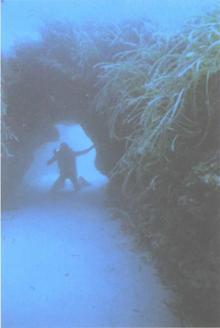 Underworld: The Mysterious Origins of Civilization
Underworld: The Mysterious Origins of Civilization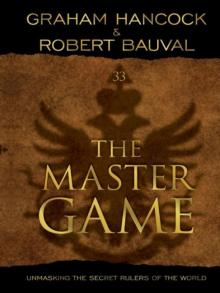 The Master Game: Unmasking the Secret Rulers of the World
The Master Game: Unmasking the Secret Rulers of the World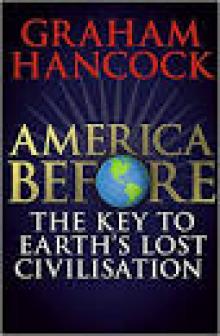 America Before
America Before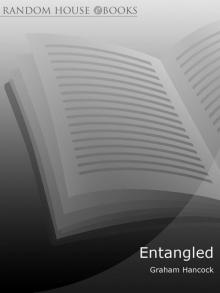 Entangled
Entangled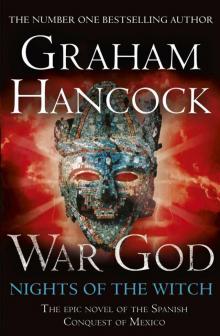 War God: Nights of the Witch
War God: Nights of the Witch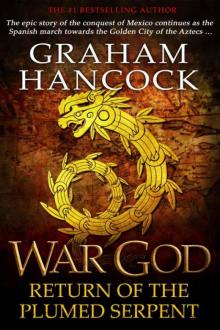 War God: Return of the Plumed Serpent
War God: Return of the Plumed Serpent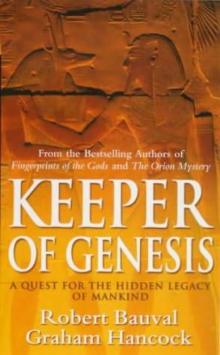 The Message of the Sphinx AKA Keeper of Genesis
The Message of the Sphinx AKA Keeper of Genesis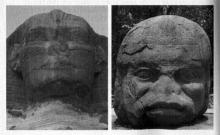 Fingerprints of the Gods
Fingerprints of the Gods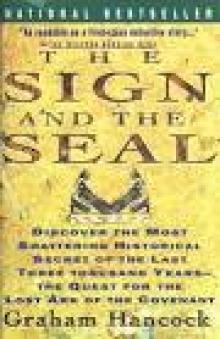 The Sign and the Seal
The Sign and the Seal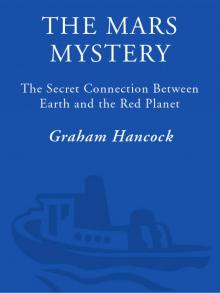 The Mars Mystery: The Secret Connection Between Earth and the Red Planet
The Mars Mystery: The Secret Connection Between Earth and the Red Planet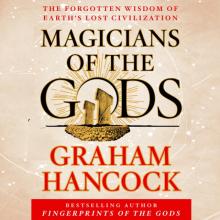 Magicians of the Gods: The Forgotten Wisdom of Earth's Lost Civilization
Magicians of the Gods: The Forgotten Wisdom of Earth's Lost Civilization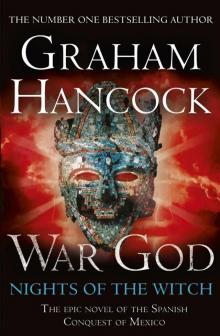 War God
War God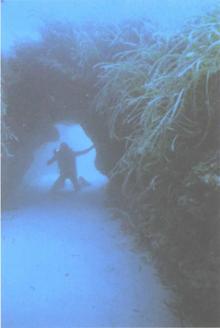 Underworld
Underworld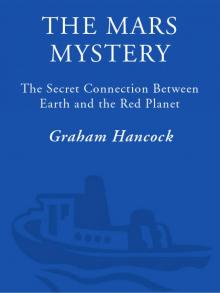 The Mars Mystery
The Mars Mystery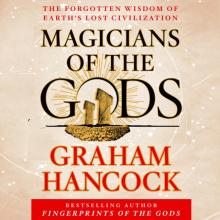 Magicians of the Gods
Magicians of the Gods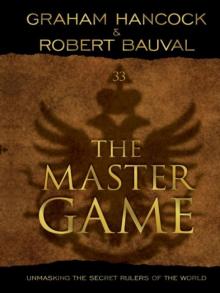 The Master Game
The Master Game